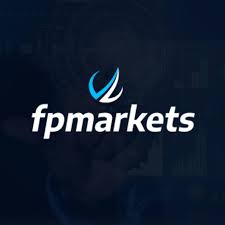You can trade the financial markets in different ways. CFD trading is one of them.
CFD is the short form of Contract for Difference. It involves speculating if the price of a financial instrument will rise or fall in value. You do not own or possess the financial instrument, you only make informed guesses about its price movement.
Trading CFDs is risky and is for experienced professional traders only.
The Australian Securities and Investments Commission (ASIC) regulates CFD brokers in Australia. For the safety of your funds, you should only trade with CFD brokers that are licensed with them.
ASIC also has a leverage cap for retail CFD traders. This is put in place to protect traders from excess losses. As much as possible, avoid high leverage when opening your trading account. You cannot trade CFDs without a CFD broker.
Comparison of Best CFD Trading Platforms Australia
| Forex Broker | AUD/USD Spread | Minimum Deposit | |
|---|---|---|---|
| eToro |
1 pip with Rollover charges
|
$50
|
Visit Broker |
| CMC Markets |
0.7 pips with zero commission
|
$0
|
Visit Broker |
| Pepperstone |
0.24 pips (Raw Spread Account) pips
|
No minimum deposit
|
Visit Broker |
| XM |
1.6 pips typical spreads on Standard Account
|
$5
|
Visit Broker |
| FP Markets |
1.4 pips on Standard Account
|
$100
|
Visit Broker |
Best CFD Trading Platforms Australia
For this guide, we compared ASIC-regulated CFD Trading platforms in Australia.
- eToro – Best CFD Broker Australia
- CMC Markets – CFD Broker with Range of Trading Instruments
- Pepperstone – Australian CFD Trading Platform with Low Spread
- XM – CFD Trading Broker with Spread only Accounts
- FP Markets – Regulated CFD Trading Platform in Australia
- Plus500 – LSE Listed CFD Trading Platform in Australia
We have selected these CFD brokers based on the Regulation/Trust score for Safety of funds, Fees, Available CFD instruments, Platforms, Risk management tools, Customer service & other factors.
#1 eToro – Best CFD Broker Australia
eToro offers social trading to their Australian Traders. But traders need to pay inactivity fees while they are not trading.
Regulation: They are regulated with ASIC as eToro AUS Capital Limited. eToro’s license number is 491139. ASIC issued the license to eToro on 03/06/2016. We consider eToro a low-risk broker.
68% of retail investors that trade with eToro loses their money while trading with eToro.
AUD/USD Fees: eToro offers trading on AUD/USD at 1 pip spread. Rollover charges are $1.983 for a short position and $2.453 for a buy position.
Non-trading fees: You will pay an AUD 10 monthly inactivity fee. This fee is charged after 12 months of no trading activity on your account.
Available CFD instruments: eToro offers a decent range of financial instruments. You get to trade 49 currency pairs, 2849 stocks CFDs, 32 commodities, 69 cryptocurrencies, 13 indices, and 264 ETFs CFDs.
Platforms: eToro does not offer the two popular MetaTrader platforms. You will have to use their web and mobile trading platforms. For copy traders, they support a proprietary platform called Copy Trader. eToro’s Copy Trader is a popular copy trading platform. We covered more on it in our comprehensive eToro review.
Risk management tools: eToro does not offer guaranteed stop-loss orders. They execute your stop-loss order at the best available market price depending on market conditions. However, they offer negative balance protection.
Customer Service: eToro AUS Capital Limited can be reached on 1-800-778-439. You can also contact them via email at [email protected]. Live chat is available as well.
eToro Pros
- Zero commission for investing in stocks
- Regulated by ASIC
- Social trading
- Zero commissions for trading currencies
- Good number stocks
- No deposit fees
- Copy trading is available
eToro Cons
- Currency conversion charges
- Withdrawal charges
- Little or no trading education tools
- The number of currency pairs is limited.
#2 CMC Markets – CFD Broker with Range of Trading Instruments
CMC Markets holds an ASIC license under the company name CMC Markets Asia Pacific (Pty) Limited.
Regulation: Their ASIC license number is 238054 and they have held their license since 27/03/2002. According to our research, CMC Markets is a low-risk CFD trading platform.
72% of retail traders lose their money with CMC Markets
AUD/USD Fees: CMC Markets offer AUD/USD at 0.7 pips with zero commission. Rollover charges for long and short positions are 0.0038% and 0.0030% respectively.
Non-trading fees: You are charged AUD 15 as an inactivity fee monthly after 12 months of trading inactivity. CMC Markets also charge a premium fee for guaranteed stop-loss orders (GSLOs).
Available CFD instruments: CMC Markets offers up to 11,000 financial instruments. You can trade 333 currency pairs, and CFDs on 80 indices, 19 cryptocurrencies, 100 commodities, over 9000 shares, and 50 treasuries.
Platforms: CMC Markets offer CFD Next Generation and MetaTrader platforms. The former is a web-based platform and is also available on mobile phones too (Android and iOS). We covered more on these platforms in our CMC Markets review.
Risk management tools: CMC Markets offer guaranteed stop-loss orders for a premium fee and negative balance protection.
Customer Service: CMC Markets CFD trading lines are available 24/6. You can connect to the line on 1300-303-888 and +61 (0) 2 8221 2100. You can also reach the CFD broker through email.
CMC Markets Pros
- Zero commission for forex pairs
- Regulated by ASIC
- Guaranteed stop loss order
- Local mobile number is available
- Up to 11,000 trading instruments
- No deposit/withdrawal charges
CMC Markets Cons
- Inactivity fee
- MetaTrader 4 does not support GSLOs
- MetaTrader 4 is not available as a web-platform
#3 Pepperstone – Australian CFD Trading Platform with Low Spread
Pepperstone also charges a round-turn commission of AUD 7 on every standard lot traded with a Raw Spread Account. On their cTrader platform, the round-turn commission is $6.
Regulation: Pepperstone is regulated with ASIC under the company name Pepperstone Group Limited. Their license number is 414530 and have been licensed since 27/10/2010. We consider Pepperstone a low-risk CFD trading platform.
AUD/USD Fees: Pepperstone offer AUD/USD at 0.24 pips (Raw Spread Account) pips and 1.2 pips (Standard Account). You will find overnight charges for AUD/USD on their platform.
75.8% of retail investors lose their money when trading with this CFD broker.
Non-trading fees: Pepperstone does not charge deposit/withdrawal fees or inactivity fees.
Available CFD instruments: You get to trade 60 currency pairs, 20 stock indices, 900 stocks, 100 ETF CFDs, 20 commodities, and 3 currency indices with Pepperstone.
Risk management tools: Pepperstone does not offer guaranteed stop-loss orders. However, there is negative balance protection.
Customer service: Pepperstone can be reached via email and live chat. You can also call their AU toll-free line on 1300-033-375. Their email is [email protected].
Pepperstone Pros
- Regulated by ASIC
- No inactivity fee
- Good market range
- Local mobile number is available
Pepperstone Cons
- Commissions are charged
- No guaranteed stop loss
- You can only find rollover charges on their trading platform
#4 XM – CFD Trading Broker with Spread only Accounts
There is no commission. Their typical spreads are higher than other CFD brokers.
Regulation: XM are regulated with ASIC as Trading Point of Financial Instruments Pty Limited. They have been licensed since 19/06/2013 with license number 443670. Your money is safe with XM.
78.3% of retail traders lose their money with XM.
AUD/USD Fees: XM offers trading on AUD/USD at 1.6 pips typical spreads with Ultra Low Standard Account, and USD 2.23 and AUD 1.73 are charged as the swap fees for long and short positions respectively.
Non-trading fees: Inactive accounts are charged AUD 5 monthly after 12 months of inactivity. No deposit/withdrawal charges.
Available CFD instruments: You can trade CFDs on 6 asset classes with XM. They include 57 currency pairs, 1,286 stocks, 10 commodities, 2 precious metals, and 14 equity indices.
Platforms: You can trade with XM using Metatrader 4 and Metatrader 5 platforms.
Risk management tools: XM offers a guaranteed fill on stop-loss orders and negative balance protection.
Customer service: You can contact XM via live chat and email. Two local phone numbers (+612-8607-8385, +612 8252 0854) are also available. Their customer service email is [email protected].
XM Pros
- Regulated by ASIC
- Zero commission
- Guarantees fill on stop loss orders
- Over 1000 stocks are available
XM Cons
- There is an inactivity fee
- A limited number of currency pairs
- High spreads
#5 FP Markets – Regulated CFD Trading Platform in Australia
You can trade AUD/USD on FP Markets’ Standard Account and Raw ECN Account. The spread for AUD/USD is significantly lower on the latter. However, you will have to pay a $6 round-turn commission
Regulation: FP Markets are licensed with ASIC under the company name First Prudential Markets Pty Limited. They have been licensed since 21/01/2005. Their license number is 286354.
71% of retail investors lose their money when trading with FP Markets.
AUD/USD Fees: AUD/USD is offered at an average spread of 1.4 pips with Standard Account, and 0.3 pips plus AUD 7 round-turn commission on Raw ECN Account. For rollover charges, you will pay AUD 2.27 for long positions. If you are going short, you pay AUD 1.02.
Non-trading fees: FP Markets do not charge inactivity fees. You might pay deposit/withdrawal charges if you chose certain payment methods.
Available CFD instruments: The following CFD instruments are available: 63 currency pairs, 10,000+ shares, 6 metals, 5 commodities, 17 indices, 11 cryptocurrencies, and 2 bonds.
Platforms: Metatrader 4 and 5 platforms are available. You can also trade with FP Markets mobile trading app.
Risk management tool: FP Markets do not offer guaranteed stop-loss orders but there is negative balance protection.
Customer Service: FP Markets is available via live chat 24/7. Their Australian mobile number is +61 (2) 8252 6800. You can make email enquiries at [email protected].
FP Markets Pros
- Regulated by ASIC
- Local mobile number is available
- No inactivity fees
- Customer support is available on weekends
- 10,000+ stocks
- No deposit/withdrawal fees for most payment methods
FP Markets Cons
- Commissions are high
- No guaranteed stop loss orders
What is CFD Trading?
CFDs are derivative products used to speculate the price movements of their underlying assets. The underlying assets could be a stock, currency pair, metal, commodities, indices, etc. For example, Gold CFD has gold as its underlying asset. As a trader, you can analyze and speculate if the price of gold will rise or fall, after which you can place a buy or sell trade. You can trade CFDs in Australia through licensed forex brokers.
CFD trading is purely speculative. If your speculation is wrong and a financial instrument rises in value when you have opened a sell contract, you lose money to your broker. Trading with leverage also increases the amount of money you can lose. This is why CFD trading is risky and should be left to experienced professional traders.
With CFD trading, there is no physical exchange or ownership of financial instruments. Your broker credits your profit into your trading account if you win a trade. If you lose, your broker debits the loss from your trading account.
How Does CFD Trading Work?
When trading CFDs, you either gain or lose money.
You calculate your profit/loss based on the difference between the opening and the closing price of your trade.
See these two examples:
1) A trading account with AUD 200 equity and 1:5 leverage. You are placing a buy trade on AUD/USD, which is currently trading at 0.7216. Your speculation is AUD/USD will rise by 50 points from the 0.7216 entry price.
Trade lot size: 0.05 (50 cents per point)
Entry price: 0.7216
Take profit: 0.7266 (50 points)
Stop loss: 0.7196 (20 points)
If this trade goes as you speculated, the profit is calculated as
50 cents x (0.7266 – 0.7216)
50 x 50 = 2500 cents (AUD 25)
This trade ended in AUD 25 profit.
2) This time, you are trading AUD/NZD using a trading account with AUD 200 and 1:5 leverage. We will be buying AUD/NZD currently trading at 1.0551. You are speculating the currency pair will rise by 70 points from the entry price.
Trade lot size: 0.05 (50 cents per point)
Entry price: 1.0551
Take profit: 1.0621 (70 points)
Stop loss: 1.0521 (30 points)
Unfortunately, the trade did not go your way this time. AUD/NZD fell, and our stop loss was triggered 30 points from the entry price. This trade ends in a loss and it is calculated as follows
50cents x (1.0551-1.0521)
50 cent x 30 = 1500cents (AUD 15)
This trade ended in AUD 15 loss.
How Can You Trade CFDs in Australia?
Step 1) Choose an ASIC-regulated forex broker. You can validate a forex broker’s regulation from ASIC website.
- Go to the forex broker’s platform to see their regulation statement. It is usually a footnote on their websites. Pepperstone’s statement can be seen in the picture below.
- Go to the link above and enter the forex broker’s name as shown below. Click the ‘go’ icon.
- You will arrive at this page below, where you have to mark Pepperstone Group Limited and click the ‘view details’ icon.
- The next page displays the forex broker’s regulation details according to ASIC.


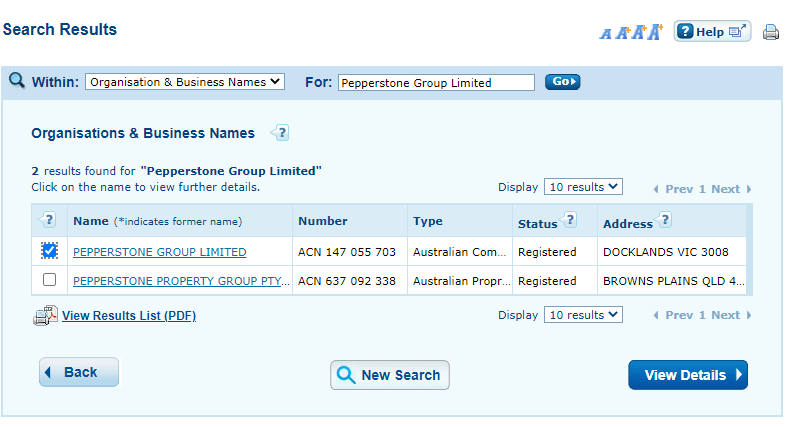
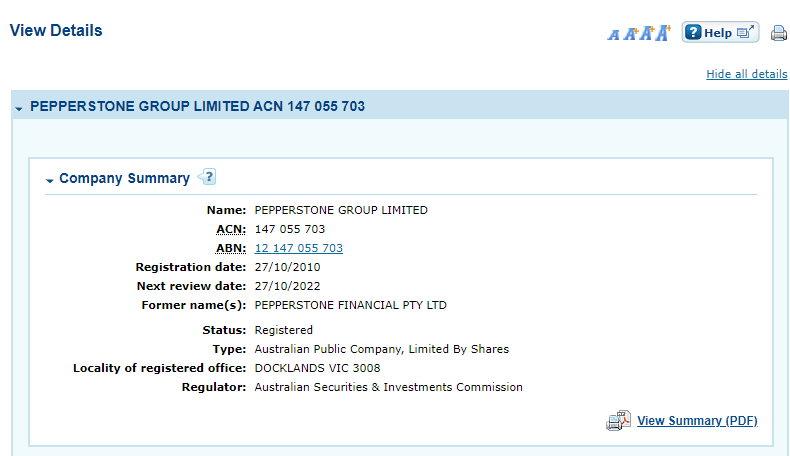
Step 2) After verifying the forex broker’s regulation, you can proceed to open your trading account.
Step 3) Verify your KYC documents. Pepperstone will typically ask for your driver’s license, passport, or government-issued ID
Step 4) Download the CFD trading platform. Forex brokers like Pepperstone offer MT4.
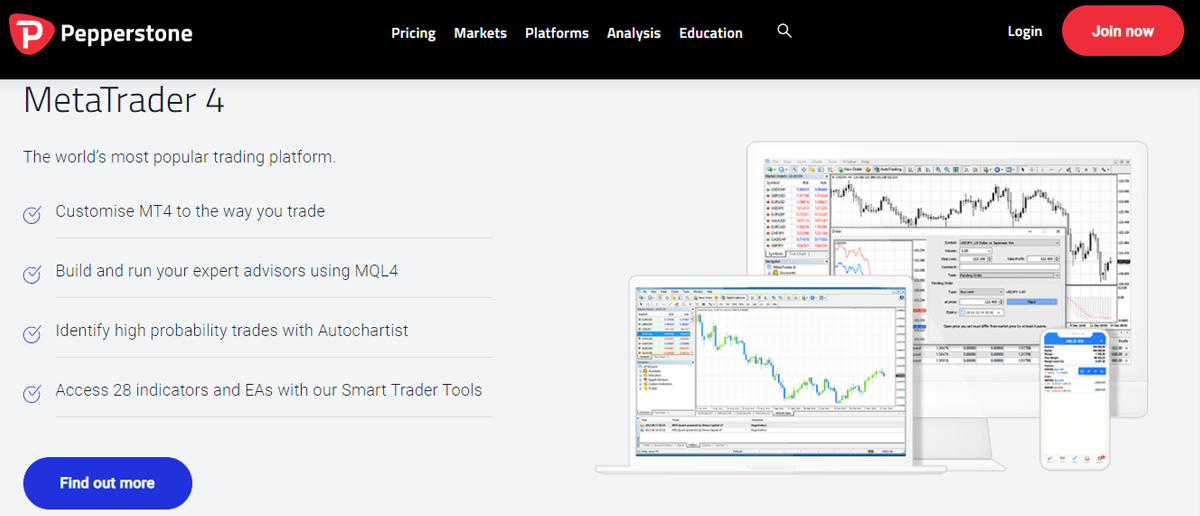
Step 5) Start trading.
Risk warning: Kindly note that CFDs are leveraged products so they are risky. CFD trading is for professional traders. 70% of retail investors lose all of their money.
How To Open a CFD Trading Account in Australia
In this section, we will walk you through what a typical account opening process looks like. We will be using CMC Markets as an example here. Opening a CFD trading account is a combination of systematic steps.
1. Go to CMC Markets’ Australia website at cmcmarkets.com/en-au. Go to the top right corner and click on ‘create account’.
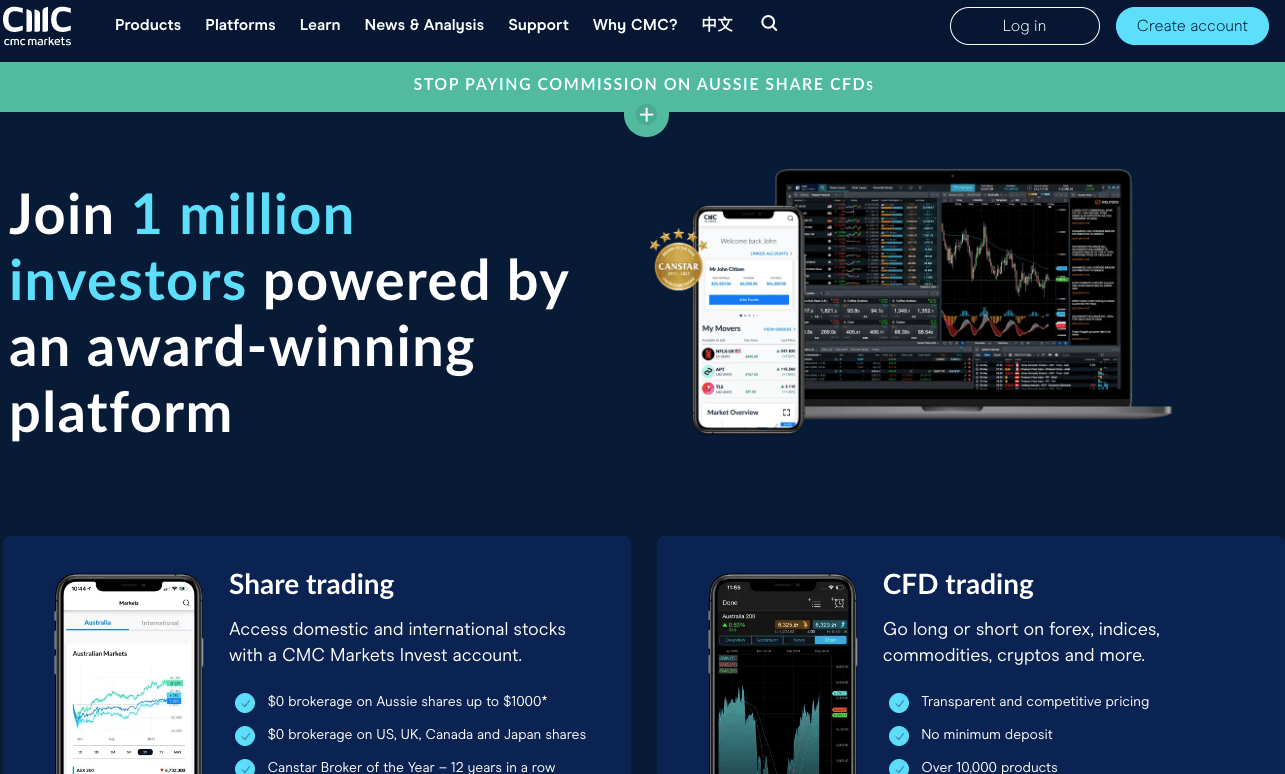
2. Choose your preferred account type between the two options below.
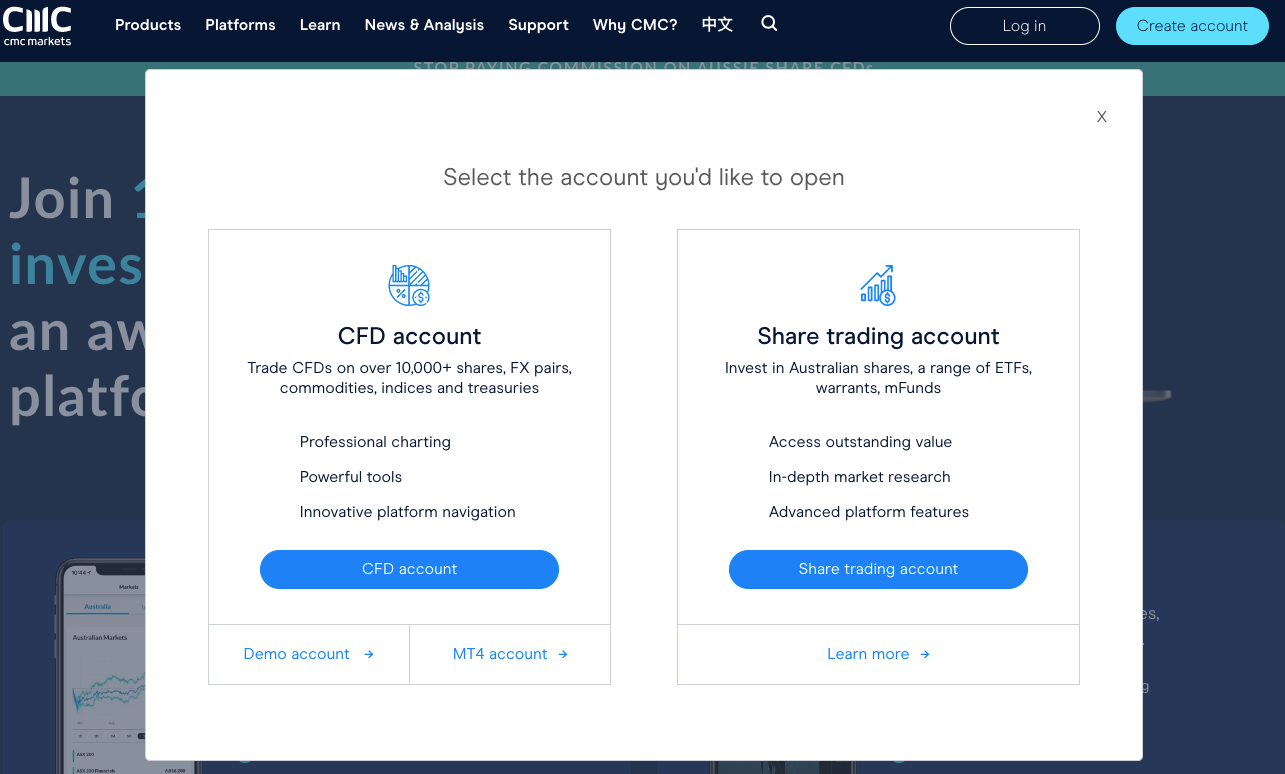
3. Enter your email and create a password. You will also have to choose your preferred trading platform here.
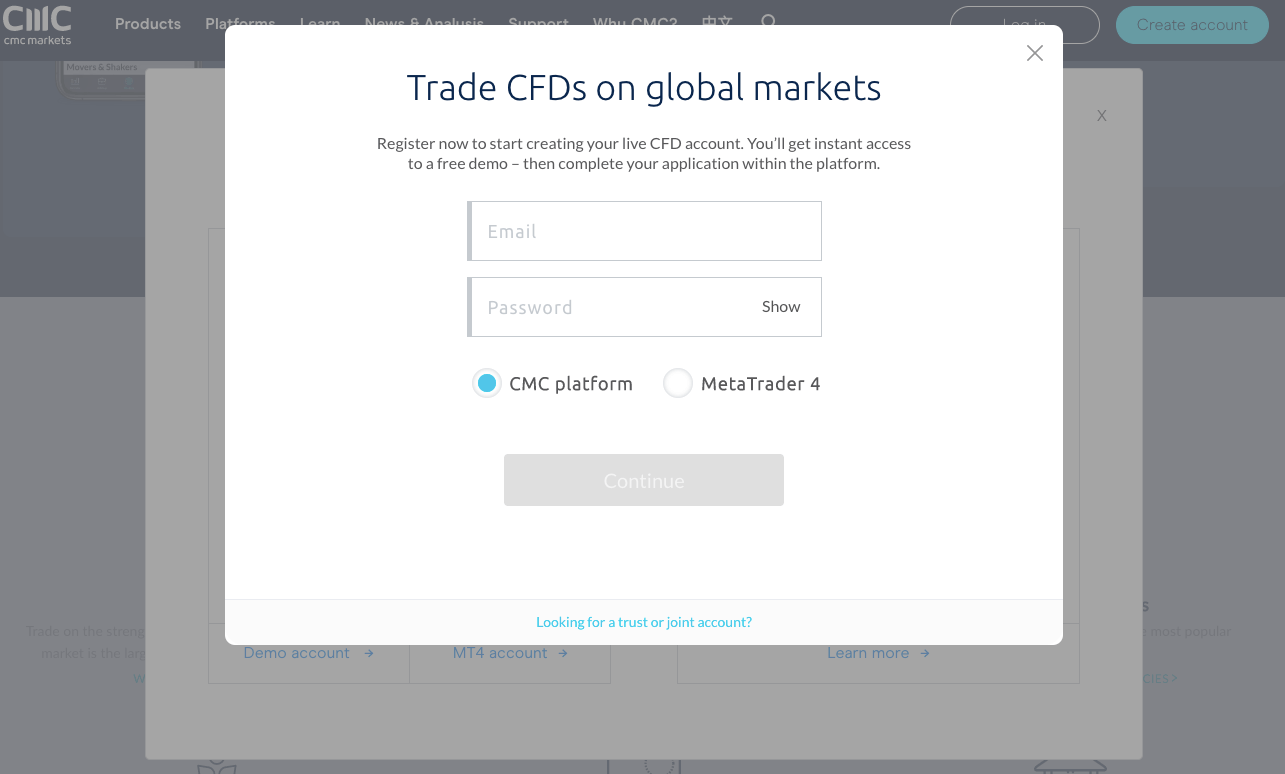
4. Supply your address, phone number, and full name. After this, click on ‘create account’. A verification code will be sent to your email.
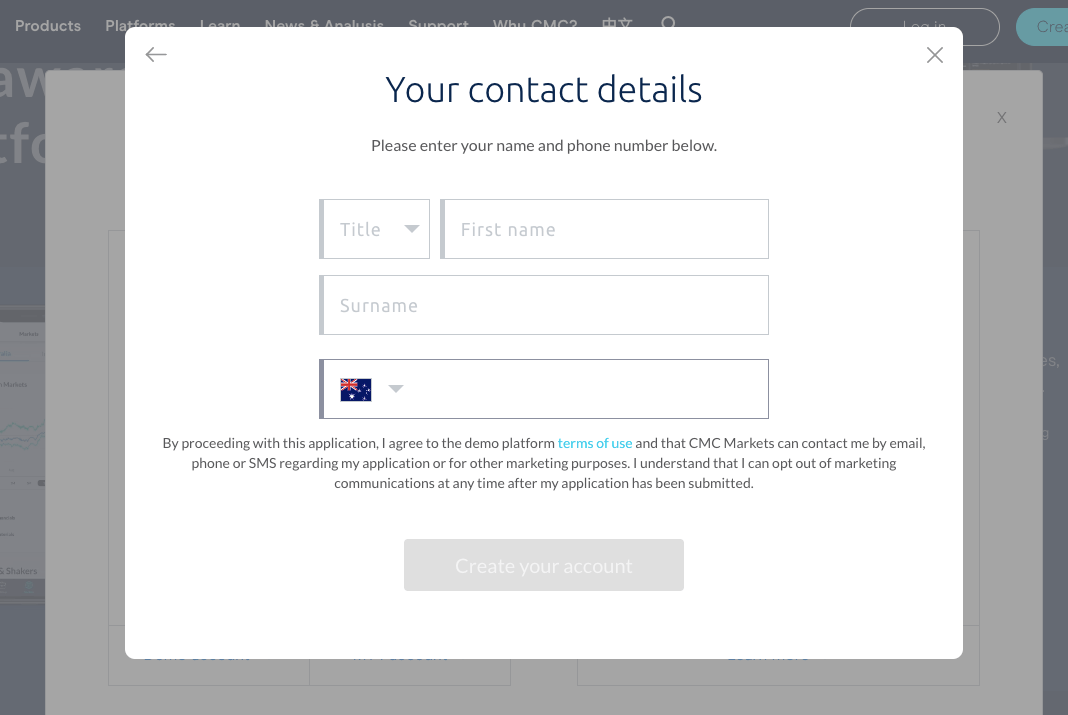
5. Enter the code and click on ‘verify’ to confirm your email. The website will then redirect you to log in to your CMC Platform.
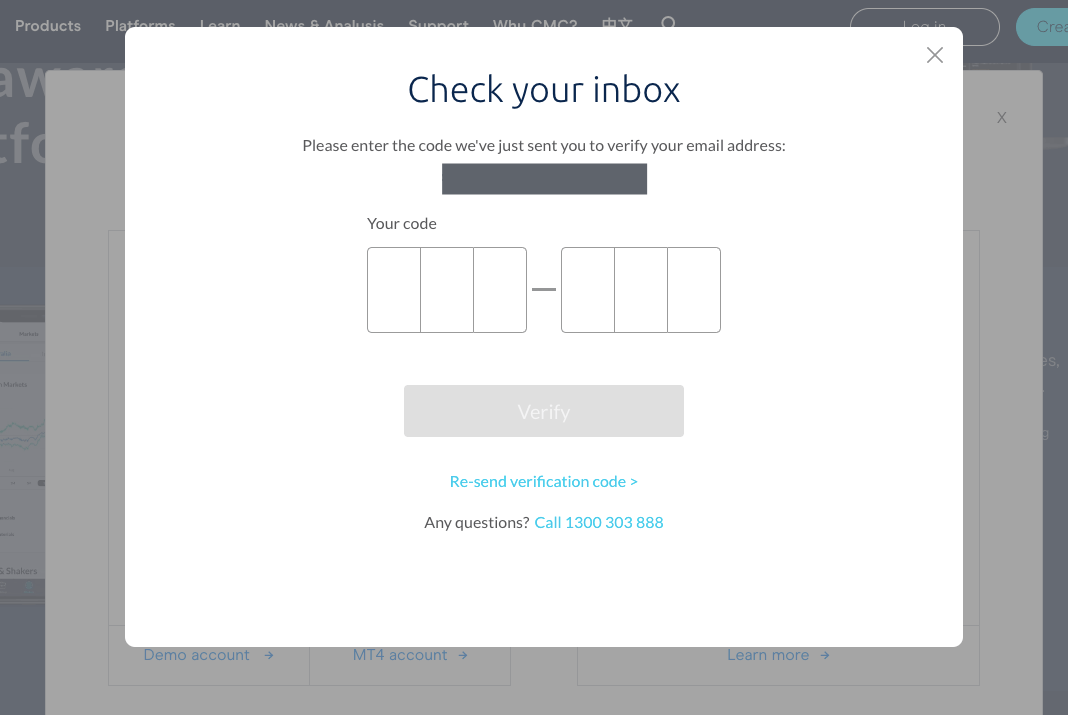
6. When you log in, you will get a demo account. You will have to click on ‘open a live account’ at the top right corner of the platform and then ‘Apply’ Now to proceed.
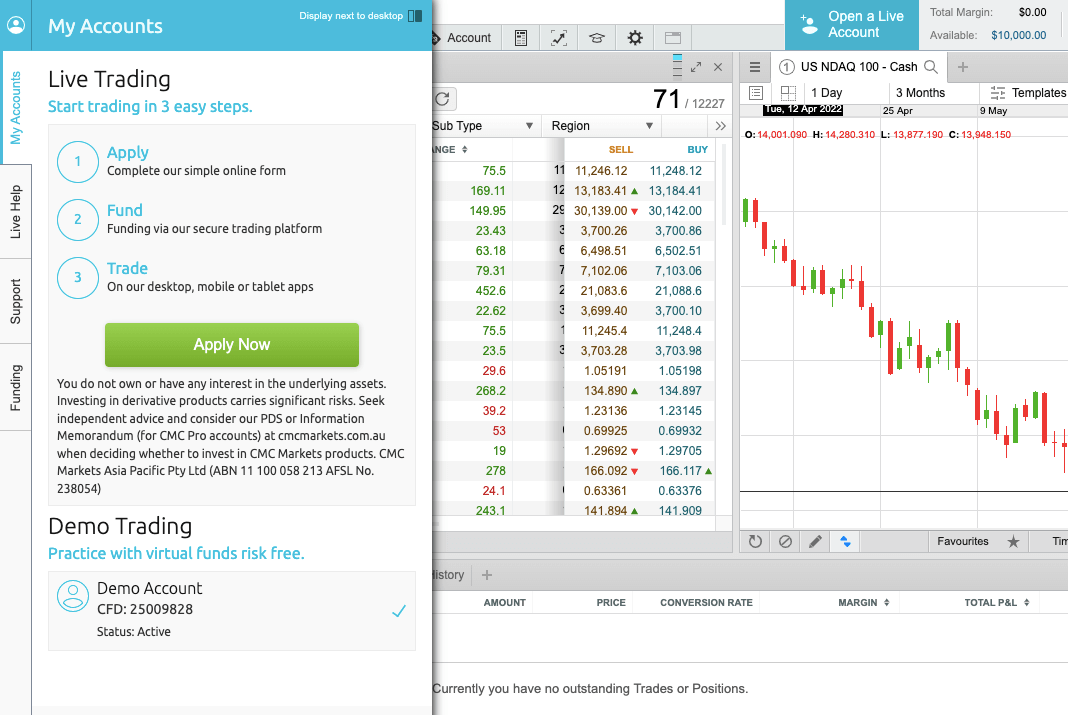
7. Choose your account type and your account’s base currency. Click on ‘Next’.
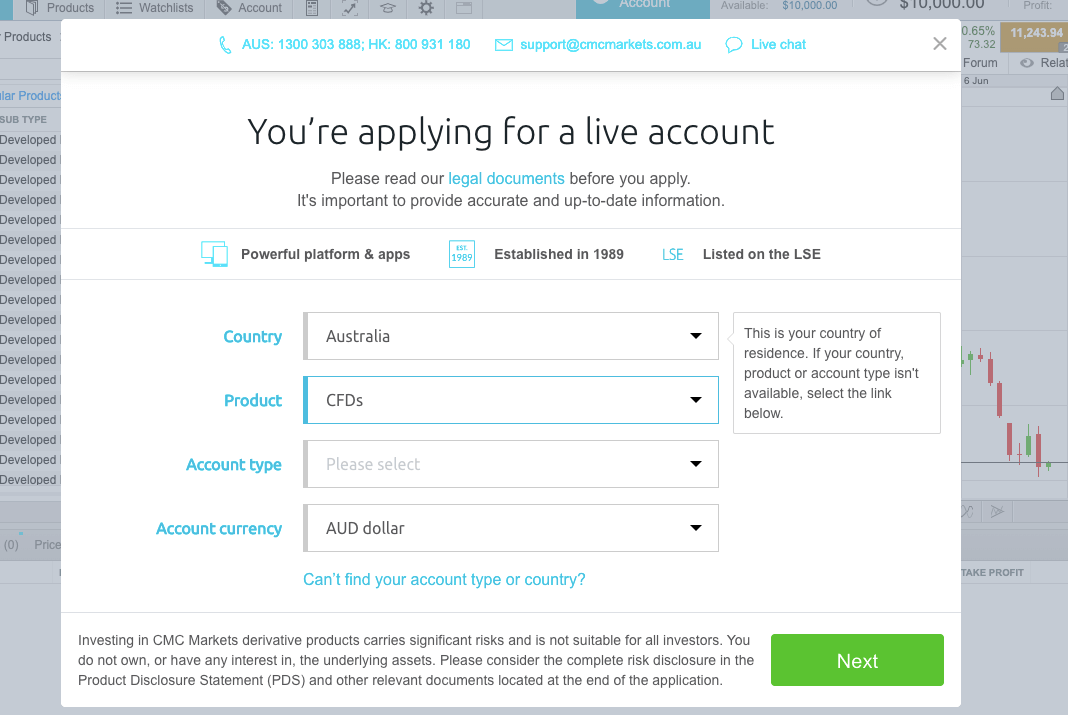
8. You will be supplying some personal details here. Date of birth, driver’s licence, and residential address. Make sure these details are accurate because they will be verified. You will also answer basic questions on nationality and tax. Click on ‘Next
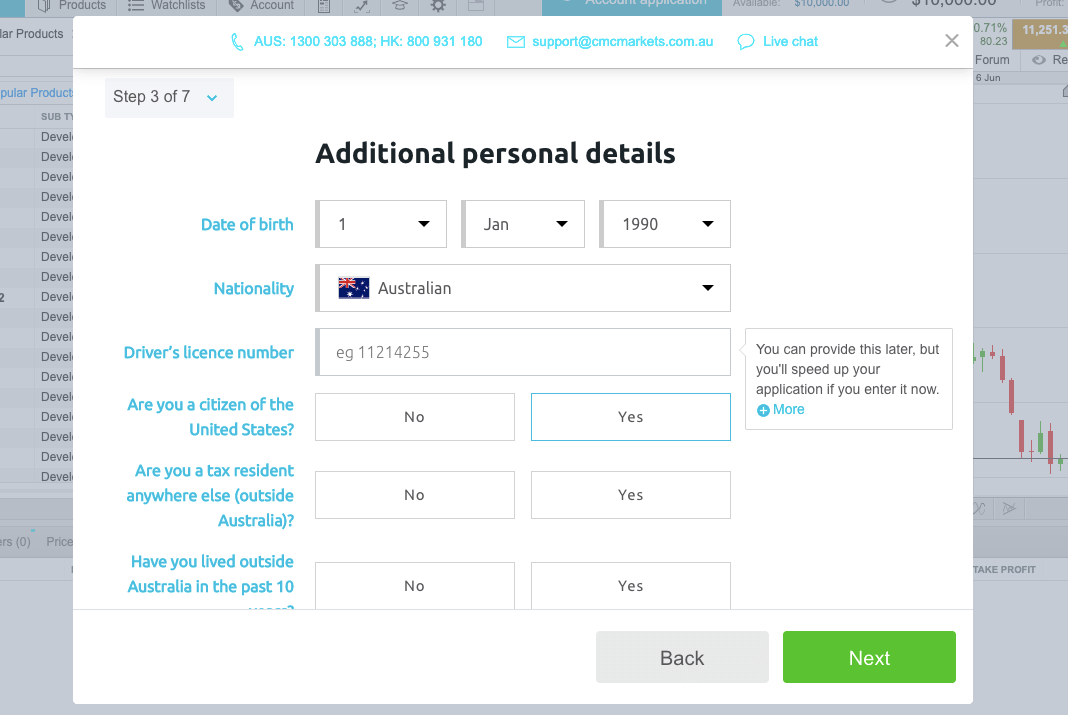
9. You can then proceed to answer questions about your employment and personal finance. When you are done, click on ‘Next’.
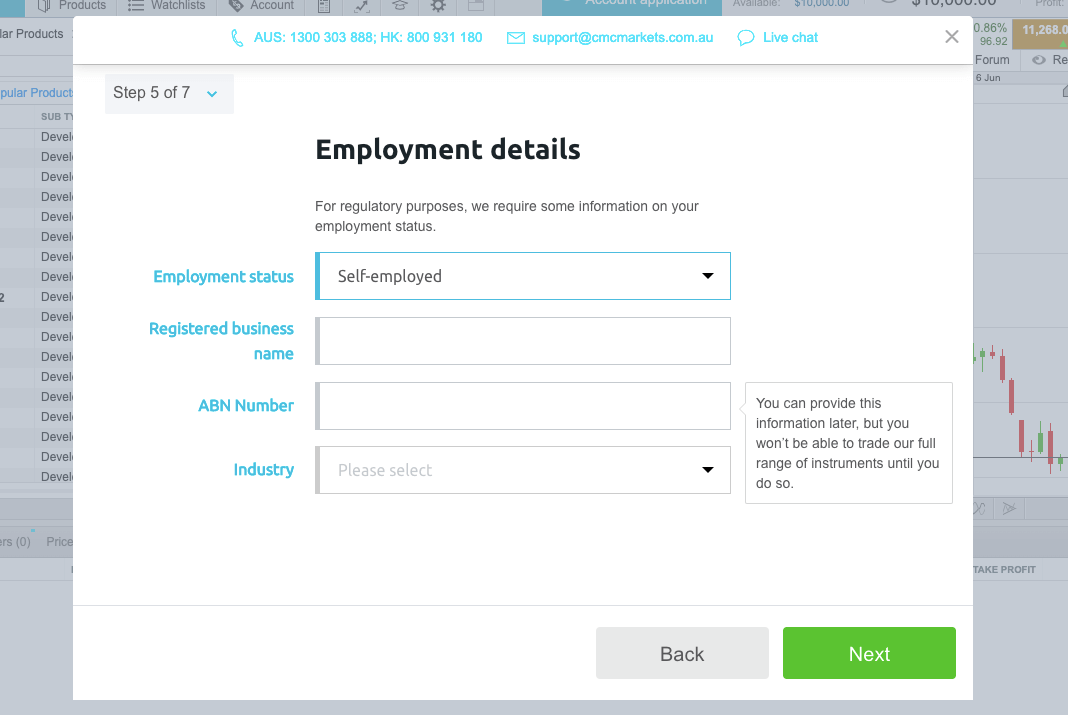
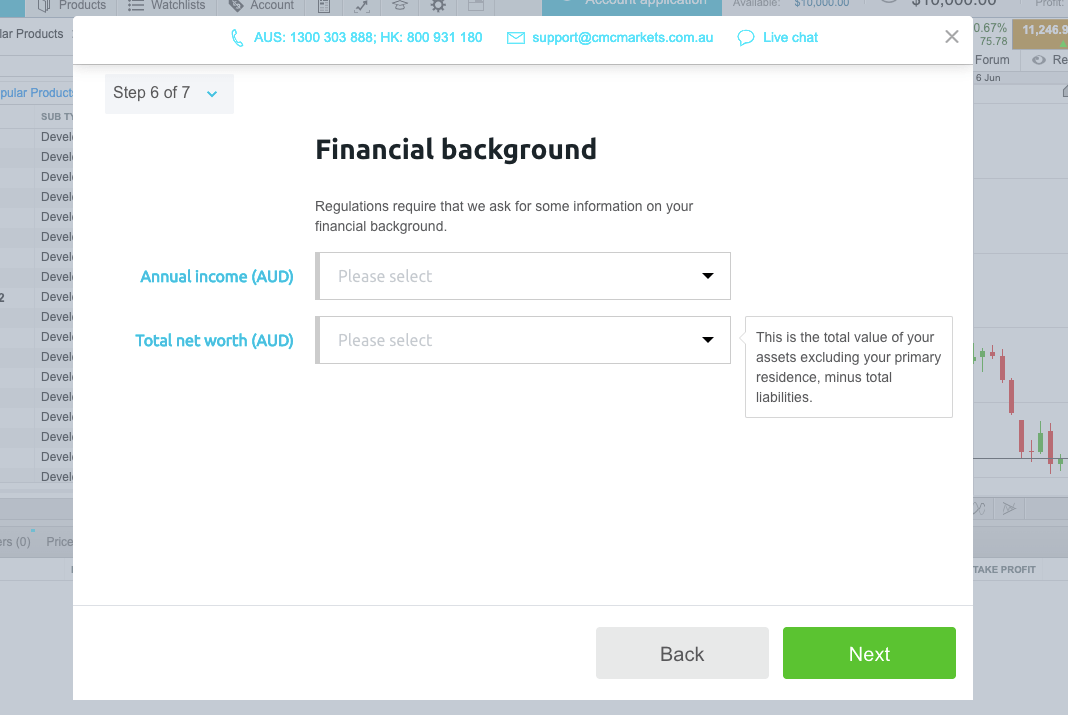
10. For this step, you will have to answer questions about your trading knowledge and experience. Click on ‘Next’ when you answer the questions.
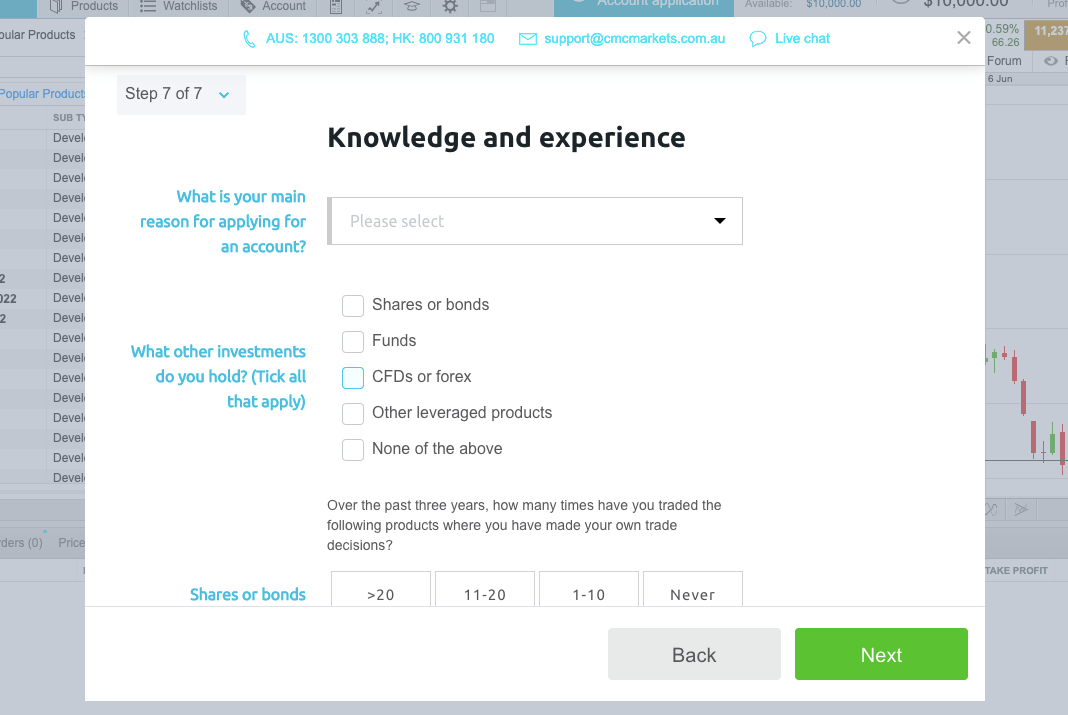
11. Read the declarations and check the ‘I agree to all the above declarations’ and click on ‘Submit’
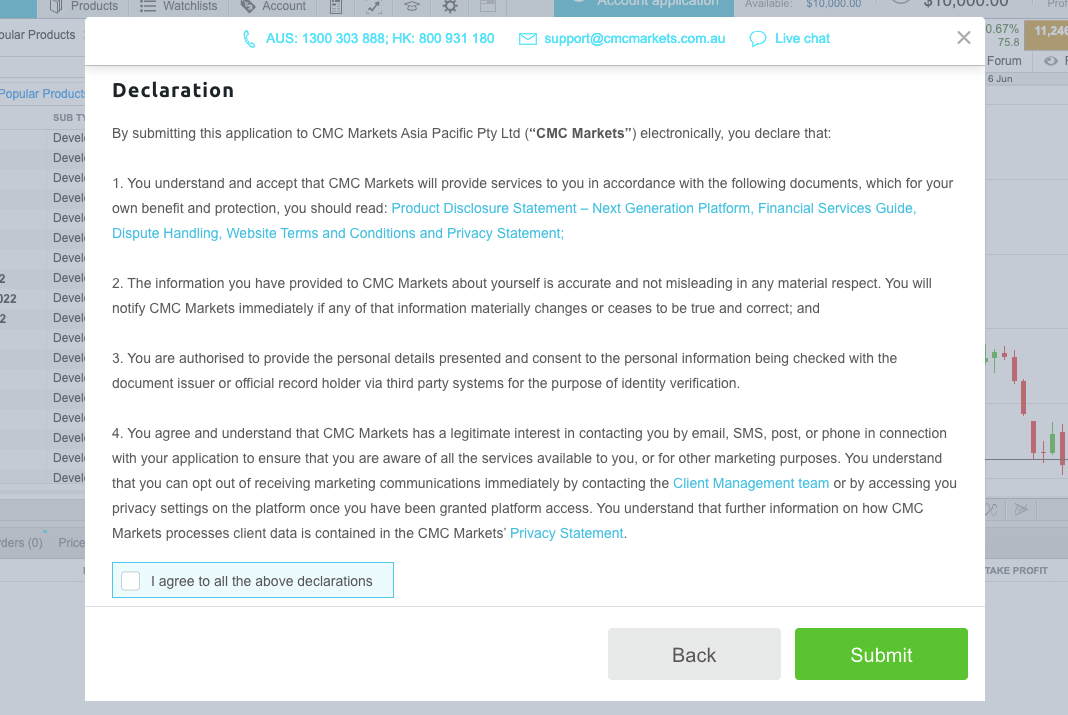
12. Click on ‘Continue’ on the page that follows.
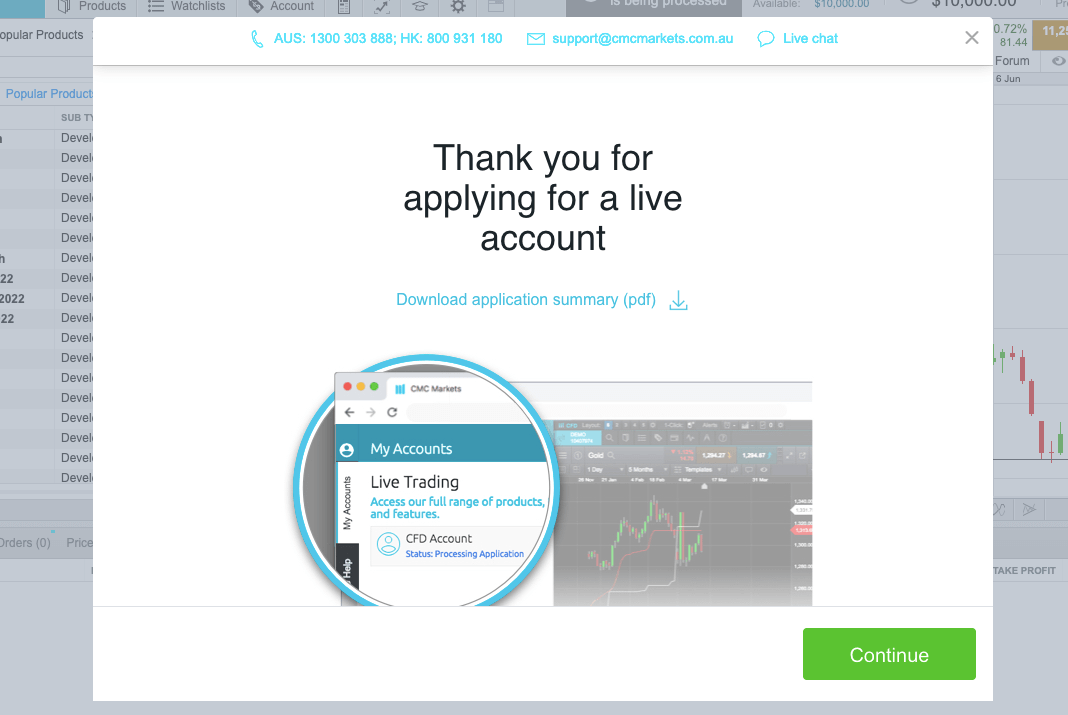
13. Complete your KYC. You can choose a document from one of the four options in the image below.
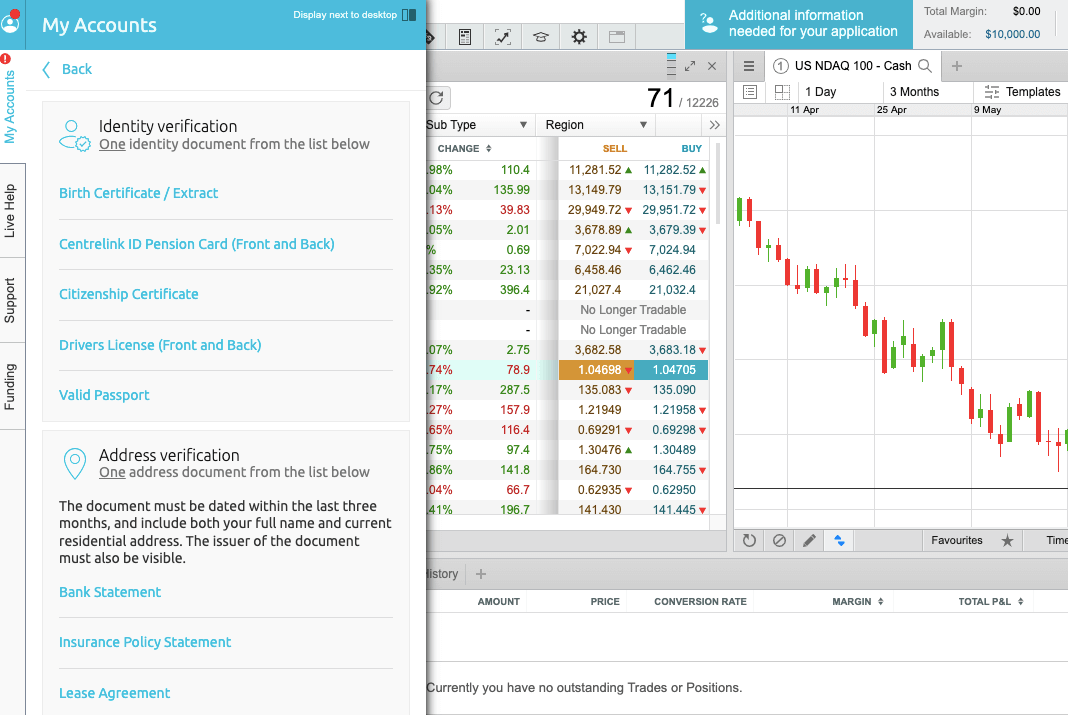
What is CFD leverage in Australia?
1:30 is the maximum leverage for CFDs trading in the United Kingdom, this limit is mandated by the Financial Conduct Authority (FCA) and all regulated forex brokers are required to follow this when dealing with retail forex traders.
The leverage limit of 1:30 means that you can borrow up to 30 times the amount of your deposit to enter a trade. If you deposit AU$100, you can open a trade position worth AU$3,000.
However, if you are an experienced forex trader that trade large volumes and want to access higher leverage for trading CFDs in Australia, you can apply for the professional trader account (after meeting certain criteria). Professional traders can access leverage of up to 1:500 or less, depending on the CFDs broker.
Note that the maximum leverage of 1:30 for retail traders apply to major forex pairs. Other instruments leverage limits are 1:20 for forex minors, major indices, and gold, 1:10 for minor indices, metals and other commodities, 1:5 for shares and bonds, and 1:2 for cryptocurrencies.
For professional accounts, the maximum of 1:500 applies to forex majors, other instruments leverage limits are 1:200 for forex minors, major indices, and gold, 1:100 for minor indices, metals bonds, FX Options and other commodities, 1:25 for BTCUSD, 1:20 ETFs and some cryptocurrencies, 1:10 for shares, and 1:5 for some cryptocurrencies.
Before applying for a professional account, you are required to meet the following criteria (wealth or sophisticated investor):
Wealth Criteria
- You have AU$2.5 million in net assets.
- You have had an annual gross income of at least AU$250,000 for the last 2 years.
Sophisticated Investor Criteria
- Taking an online test to demonstrate your knowledge of financial markets trading.
- Show proof of placing at least 50 trades each quarter over the last 5 years with a notional value of $500,000
It is best that you do not use all the leverage available as this increases your risk and you can lose your money.
Can you lose money with CFD?
Yes, CFD trading involves using leverage to trade financial instruments, trading leveraged CFDs products involves risk and you can lose all your money. It is best to avoid trading leveraged products unless you understand how they work and have experience.
How to Choose a CFD Broker in Australia
ASIC regulation is the most important factor to consider. We have looked at how you can check this in a previous section. However, there are other important factors to consider when choosing a CFD trading platform. Putting all of these factors together is important for a wholesome trading experience. Here are some of them:
Account Type: CFD brokers usually offer at least one account. Most brokers have more than one. It is important to consider this factor for various reasons. First, there is flexibility in trading costs. Some accounts like ECN-type accounts have low spreads with an extra commission.
Also, there are also accounts with relatively high spreads with zero commission. Furthermore, some brokers might not have an equal distribution of CFDs on all of their accounts. Some accounts might have stock CFDs while some do not. All of these depend on the broker you choose so you have to check.
Let us see how you can go about this. We will use a CFD trading platform with multiple accounts as our example. Most brokers in our review meet up to this standard. However, we will be using XM.
First, go to the Australian version of XM’s website. On the website, click ‘TRADING’ (highlighted red), then ‘Trading Account Types’ (in the red box). Here is an image to help you understand

If you do this correctly, you will be taken to another page. Scroll down that page and you will see XM’s account types as shown below
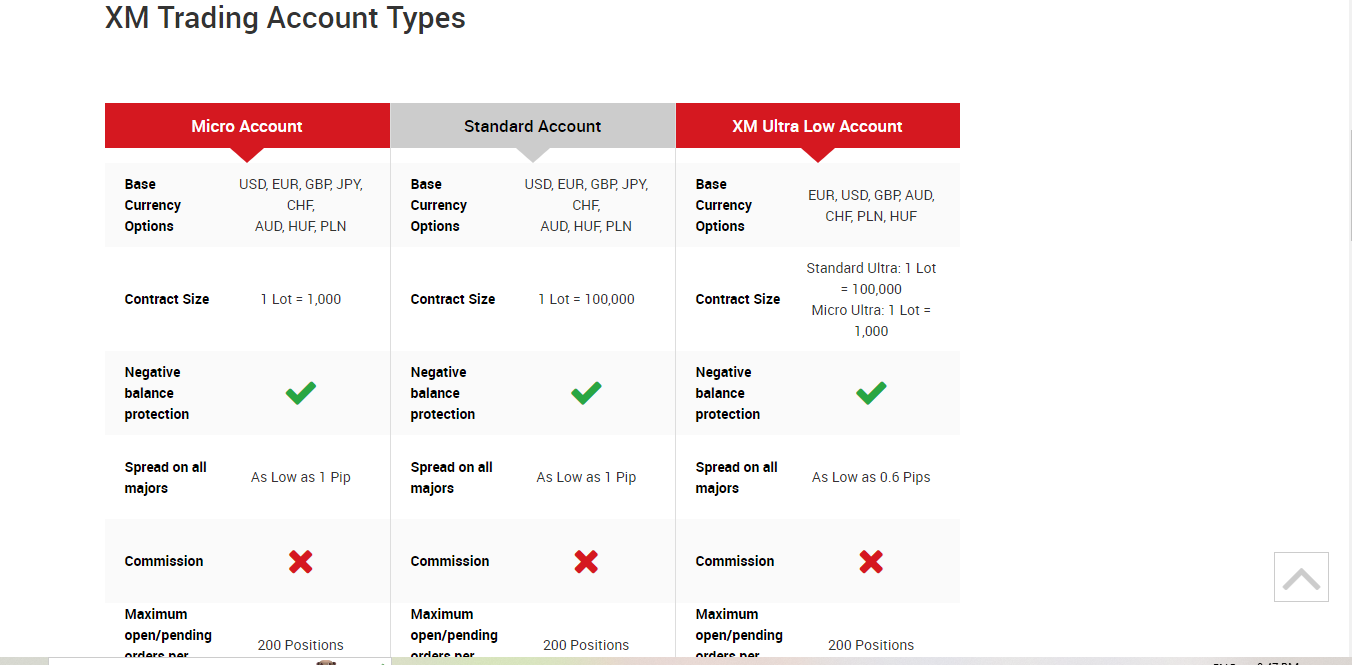
From the image, you can see the differences in the trading account types. For example, the XM Ultra Low Account has spreads beginning from 0.6 pips. The other accounts have spreads beginning from 1 pip. This means the spread cost is higher on the latter.
Can you see why it is important to compare different accounts?
Fees: Opening an AUD Account gets rid of conversion fees which is a non-trading charge. However, there are other trading fees like spread, commissions, and swaps. Most brokers charge spread and swaps. Commissions might or might not be charged based on account type.
Trading fees affect your final profit or loss. Brokers charge them regardless of your trade result. This is why it is important you check if they are high or low. All brokers charge a spread and swap on all of their currency pairs. The size of the spreads usually vary by account types. This is another reason you should check your broker’s trading fees.
Let us see an example with FP Markets.

From the image, FP Markets offer two trading accounts – Standard and Raw ECN Account. If you compare the two accounts, you will observe that average spreads are higher on the Standard Account. This is because the other account is ECN type and the spreads are raw.
Do you see why it is important to check your broker’s trading fee structure?
The other side of trading fees is commissions per standard lot. Brokers do charge them but not on all accounts. Trading fees are structured in a dynamic way and usually vary per broker.
CFDs Range: CFD brokers must have a wide range of CFDs. Forex, commodities, metals, and stocks are the most common class of CFDs. Some CFD brokers might even have ETFs. Under these classes, there should be a good number of instruments.
For example, a broker’s forex pairs should not only include majors like AUD/USD, and GBP/USD. You should check if there is enough minor pairs, exotic pairs, and pairs from emerging companies.
A wide range of CFDs allows that you to explore the market more. Trading opportunities are not always available on all asset classes at the same time. So if the forex market is not looking good, you can trade other asset classes. This is another essential reason to check this factor.
Here are the different CFDs with eToro for example.

Can you see the different options available? You can click each CFD class to know about trading conditions like spreads, commissions, and rollover charges.
Trading Software and Apps: A CFD broker will have third-party trading platforms, a proprietary trading platform or both. The key factor here is to make sure that you an trade on desktops and your mobile phone. Trading on these two devices comes with vastly different experiences.
So after making sure your broker has a platform like MT4, MT5, or cTrader. You need to check if the platforms are supported on desktop and mobile phone. Once you verify this, the final step is to verify if you the trading software and apps are supported across the most popular operating systems (android, iOS, and windows)
Deposits/Withdrawals: This is another important factor. You want your CFD trading platform to have multiple deposit/withdrawal channels. Bank transfers, credit/debit cards, and e-wallets are the most common. You could incur some fees during funding/withdrawal. So you want to check if there are extra fees attached to the payment methods available.
Most brokers charge no extra fees. However, your bank and third-party payment providers might charge extra fees. Also, you might want to check if other local payment methods like BPay and POLi are available.
Other than availability, you also want to check how long it takes to process payment. Typically, deposits are instant while withdrawals can take 2-3 days. Here is a screenshot of the deposit/withdrawal methods accepted by Pepperstone Australia.
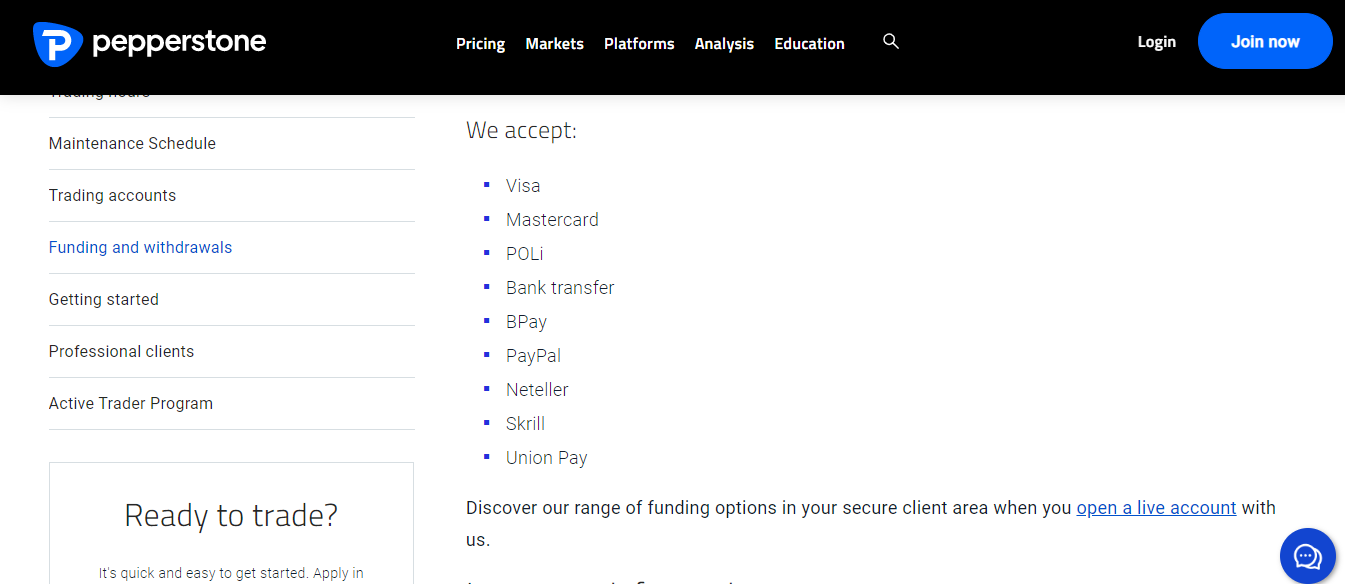
Losing Traders: CFD trading platforms are able to track the percentage of retail traders that lose money when trading with them. It is not necessary for forex brokers in Australia to reveal this data. In the Uk, however, the FCA’s regulation makes it compulsory.
It is important to check this factor to know if your chosen trading platform has higher data than the industry average (80%). To know your broker’s data, go to the UK version of their website. You will find it at the top of the homepage as shown below with Pepperstone UK

Apart from conventional funding methods, Pepperstone also accepts POLi, BPay, and Union Pay.
AU Customer Support: You might need your CFD broker to clarify some things for you. It could be trading conditions, their charges, or regulation. Most CFD brokers have an FAQs section but it might not suffice. Therefore, a CFD broker should be reachable via email, live chat, and mobile phone (preferably an AU number). Try and test a forex broker’s support to see how fast they answer before signing up with them.
Is CFD Trading Risky?
1) Risk of leverage
Leverage can make or mar your account. You can make more profit as much as more loss trading with leverage. See a practical example below
Let us assume you have a trading account with AUD 200 and 1:1 leverage (no leverage). If you buy Gold CFD (0.01 which is 10 cents per point) at the entry price of 1817.89 but the price falls and triggers your stop loss at 30 pips from entry (1817.59). Your loss is a paltry AUD 3.
If you take this same trade on an AUD 200 trading account with (1:5) leverage. The implication of this is that your account is 5 times stronger (AUD 1000). You will be able to control more trade volume for a small margin.
So, you placed a buy trade on Gold CFD at 1817.89, with the same stop loss. This time, you can trade at 0.1 (AUD 1 per point) lot size because of your leverage. The trade goes against you but your loss is calculated as 1 x 30 = AUD 30.
The 1:5 leverage multiplied your loss 10 times the time you used no leverage. This is why CFDs are risky and should be left to professional traders.
2) You can lose your entire trading capital
This can happen if you overleverage your account and trade volatile instruments. If you do not have enough money in your account to meet up with margin requirement, you will not be able to trade. Negative balance protection ensures you do not lose more than your capital. However, it is possible to lose all of your trading capital
3) Risk of Fraud
There is a risk of trading with unregulated CFD brokers. These brokers can register you under loosely regulated entities and can defraud you. Also, there is no form of insurance if your money is lost. You can mitigate this risk by signing up with ASIC regulated brokers only.
4) Gapping Risks
The reason you are able to open a contract (buy or sell) on a CFD is because of liquidity. Liquidity is when there is enough money volume involved in the trading of a CFD. However, there are rare occasions where your contract can become illiquid because of a low volume of money.
Illiquidity, coupled with volatility in the markets can cause your trade to be executed at unfavorable prices. In other words, the price of a CFD can drop before your trade is executed at your preferred price. This phenomenon is known as Gapping.
If gapping occurs when you have a trade open, it will negatively affect your profits.
5) Holding costs
Some CFD trades can take up days or weeks to reach your exit point. The longer you hold a trade, the more the holding costs you procure. Holding costs accumulated over a long period will make you pay a lot to your broker. For every day you do not close a trade, you will pay a swap for that day.
On specific days, the holding cost might be twice the normal fee (double swap). Holding costs can reduce your profit or amplify your loss when they accumulate.
Is there Capital Gains Tax on CFD Trading?
Also known as CGT, capital gains tax is the tax you pay on profits made from selling assets. These assets could be crypto, stocks or even currency assets. Though CFD trading involves buying and selling, it is speculative. You buy and sell derivatives of currencies, shares, and other financial instruments without owning them physically.
Therefore, your profits or losses depend on the difference between your entry and exit price per trade.
In Australia, there are no capital gains tax on CFD trading. Your profits or losses are considered assessable income or allowable deductions. Therefore, you are required to report them. Other than this, you will not pay any taxes on your profits.
How Do CFD Brokers Make Money?
CFD Brokers make money through different means like spreads, fees, and overnight financing. Though fee structures may differ per broker, all CFD brokers combine these various means to generate revenue.
The spread is the difference between the buying (ask) and selling (bid) prices of a CFD. Brokers typically charge traders this spread, and they make money regardless of your trade result (profit or loss). Some brokers may offer fixed spreads, while others provide variable spreads that can change based on market volatility.
Other than spreads, brokers may also charge commissions and inactivity fees.
Another fee charged by CFD brokers is overnight financing also known as swap. When you hold a trade overnight, a fee is charge that reflects the cost of maintaining your trade overnight.
In essence, you can say that CFD brokers have multiple streams of making money. However, it is important for you to research your broker’s fees structure. For example, some brokers do not charge inactivity fees. So it is important always that you do your research.
Is CFD Trading Profitable?
Yes, CFD trading can be profitable. Some traders (retail or professional) can make money sometime. However, 70-80% of forex traders lose their capital trading CFDs. This is due to the risk that comes with CFD trading. CFDs are leveraged products which further increases the risk of losses.
This is why CFD brokers licensed with tier-1 regulators are required to reveal potential risk disclosures to their clients. Brokers regulated in the UK will give you the exact percentage of their clients that lose their money. They also update this data as it changes.
CFD brokers in other jurisdictions might just let you know that your capital is at risk without any data. CFD trading is not a get-rich-quick-scheme. You need to have a clear trading strategy combined with risk management. This helps minimize your losses but that is still no guarantee.
Is CFD Trading Good for Beginners?
CFD trading might not be the best for a beginner. There is an extra risk that comes CFD trading because of leverage. Leverage increases the potential for profit and loss. It goes both ways. This is why CFD trading is different from traditional investing.
If you want to go into CFD trading as a beginner, a demo account might be the best for you. With this account, you get virtual money that gets you acquainted with the CFD market. You can trade different instruments without losing real money.
If you have practiced long enough and have confidence in your strategy, you can then move to a real account. Otherwise, it is better to avoid the risk entirely.
What is the Difference between CFD Trading and Forex Trading?
CFDs are derivatives. In CFD trading, traders do not own the assets they buy. However, the derivative derives its value from the assets. So if you want to trade EURUSD for example, you will not hold the currency as yours. In forex trading, you will own the currency pair you are trading. You own the assets.
What is the Difference between Trading and Investing?
Trading involves speculating the price of a financial instrument using technical and fundamental analysis. When you are investing, you own a part of the total value of an asset. For example, you can trade a stock as CFD. If you do this, you are only speculating if the price of the stock will rise or fall. Usually, this is suitable for short-term traders.
When you invest in a stock, you are owning that stock with the hope that it will rise in value in the long-term.
Are all CFD brokers regulated?
Every forex broker has one regulation or the other. However, regulations are in tiers. Tier-1 regulators like ASIC and the FCA have a regulatory framework that protects traders. However, CFD brokers are banned in certain countries like the USA.
How to Reduce Risks in CFD Trading?
Reduce leverage: In Australia, the maximum leverage for retail traders is 30:1. However, you might be able to choose an even lower leverage. A lower leverage reduces the amount of losses.
Diversified trading: Trade more than a class of CFDs. Trade different financial instruments. Incorporate multiple timeframes into your strategy. This can minimize your risk exposure.
Smaller lot size: In a bid to make money, some traders tend to trade huge lot sizes. This can lead to margin call and loses. Instead, trade smaller lot sizes especially if you are new. It helps you control your emotions in trading.
FAQs on Best CFD Brokers in Australia.
Is CFD trading legal in Australia?
Yes, CFD trading is legal in Australia. The Australian Securities and Investments Commission (ASIC) regulates CFD trading in Australia.
What is CFD trading?
CFD trading is a method of trading financial instruments by speculating on their price movements without a physical exchange of the instruments. This Is a way of speculating on the price of an underlying asset.
What is the best CFD trading platform in Australia?
As per our research, Pepperstone, XM, CMC Markets, FP Markets, and eToro are good for Aussie traders. They are licensed with ASIC and considered low-risk.
You can read our in-depth review of ASIC regulated brokers for more.
Which CFD trading platform is best for beginners in Australia?
According to our review, Pepperstone and CMC Markets are the best CFD trading platforms for beginners. They both offer MT4 and their websites are easy to navigate.
Can you make money from CFD trading?
According to ASIC, more than 70% of retail traders lose their money while trading CFDs. CFD trading is risky; forex brokers are mandated to mention the percentage of traders that lose money when trading with them.




